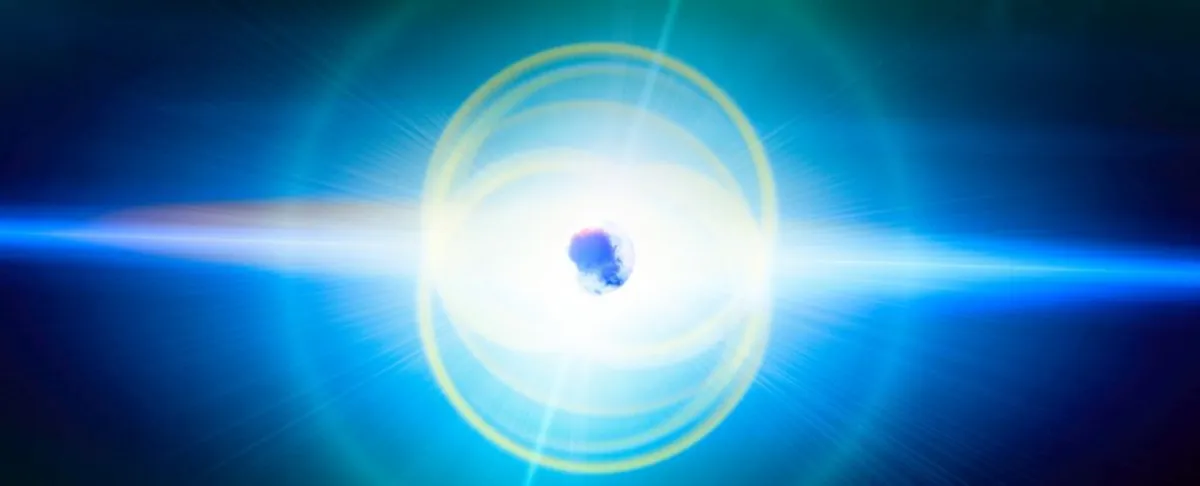
A recent breakthrough in astrophysics has revealed a dazzling bolt of radio light from across intergalactic space, marking it as the most powerful fast radio burst (FRB) recorded to date. On March 16, 2025, the CHIME radio telescope located in Canada captured this extraordinary one-off FRB, which was so intense that astronomers initially struggled to comprehend its significance. This astonishing event discharged, within mere milliseconds, an energy output equivalent to that of the Sun over a span of four days, earning it the name RBFLOAT, or the radio-brightest flash of all time.
The brightness of the RBFLOAT was so overwhelming that it was initially misidentified as radio frequency interference (RFI), a common phenomenon caused by nearby devices like cell phones or airplanes. According to astrophysicist Wen-Fai Fong from Northwestern University, it took extensive investigation by the research team to confirm that they were indeed observing a genuine astrophysical signal rather than mere interference.
Fast radio bursts, or FRBs, are captivating astronomical phenomena characterized by their short-lived yet immensely powerful pulses of radio waves, which seem to emanate randomly from distant regions of space. FRBs can be classified into two main categories: those that are repeating and those that are one-off occurrences. Repeating FRBs are typically predictable and easier to triangulate, while one-off FRBs present a significant challenge due to their brief nature, often lasting less than a blink of an eye.
To enhance the tracing of one-off FRBs, CHIME has been supplemented with smaller, secondary telescope arrays known as Outrigger telescopes, strategically placed at considerable distances from the main facility in Canada. This expansion of detection capabilities has allowed researchers to triangulate the RBFLOAT signal with remarkable precision, achieving a resolution of just 45 light-years. With the Outriggers operational, the team successfully traced the RBFLOAT to the outskirts of a galaxy situated in the Big Dipper constellation, approximately 130 million light-years away—making it the closest non-repeating FRB identified to date.
The meticulous localization of RBFLOAT enabled scientists to delve into the environment from which this FRB originated. Utilizing the MMT telescope and the prestigious Keck Observatory for follow-up observations, astronomers have begun to narrow down the potential sources of FRBs. An increasing amount of evidence, including an FRB detected within our own Milky Way galaxy, suggests that highly magnetic neutron stars known as magnetars are likely responsible for many of the FRBs detected on Earth.
According to astronomer Yuxin Vic Dong of Northwestern University, the RBFLOAT lies on a spiral arm of its host galaxy, an area typically associated with ongoing star formation. This observation supports the hypothesis that the FRB may originate from a magnetar. Intriguingly, the sensitive imaging capabilities of the MMT revealed that the FRB is positioned outside the nearest star-forming clump, which is unexpected, as one would typically anticipate such events to occur within areas of active star formation. This anomaly raises questions about whether the progenitor magnetar was displaced from its birthplace or formed in isolation at the FRB's location.
The discovery of RBFLOAT represents a significant advancement in our understanding of fast radio bursts. Its extreme brightness and proximity to Earth have the potential to provide valuable insights into the nature of FRBs. Currently, researchers are investigating whether there are notable differences between repeating and one-off FRBs and if magnetars are the sole sources of these enigmatic signals. The data collected from individual FRBs is crucial for addressing these questions.
As astronomer Tarraneh Eftekhari from Northwestern University notes, RBFLOAT is merely a single drop in the vast cosmic ocean. Its detection highlights the transformative capabilities of CHIME, which has opened new avenues for FRB research. With hundreds of precisely localized events anticipated in the coming years, the field is poised to explore the diverse environments from which these mysterious signals originate, bringing us closer to unraveling the secrets of the universe.